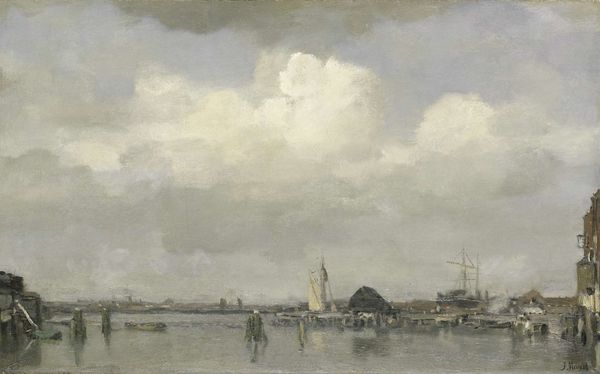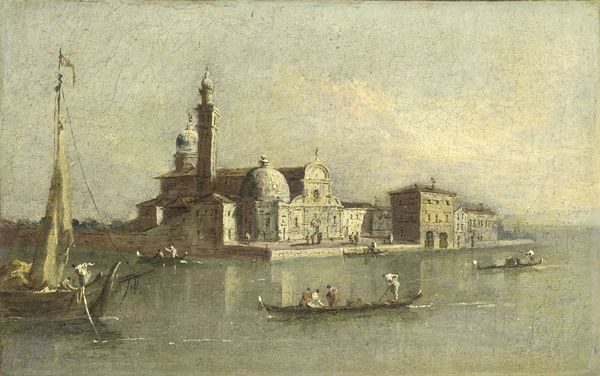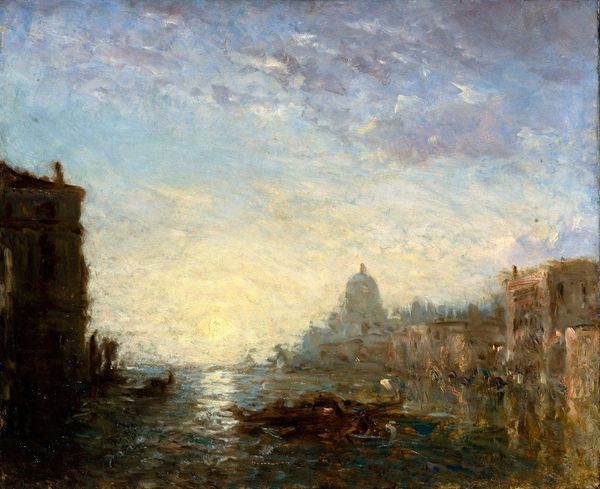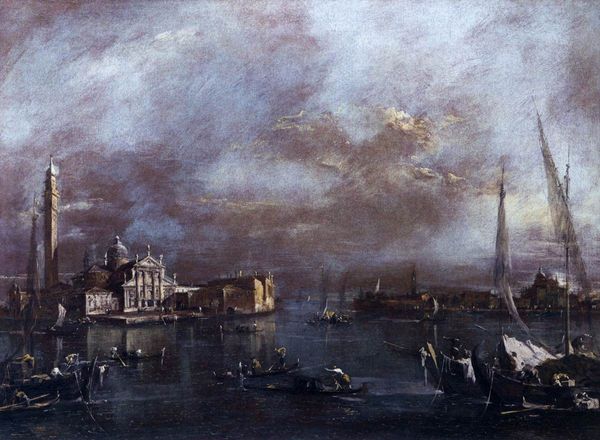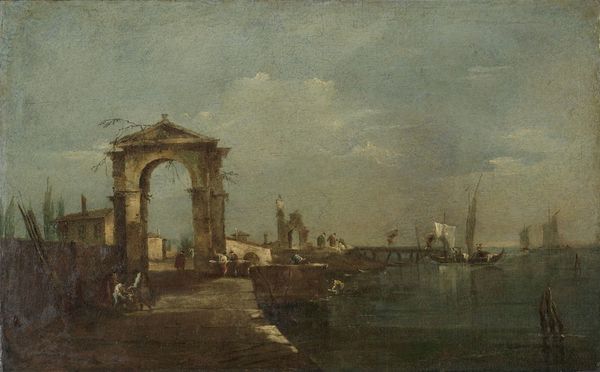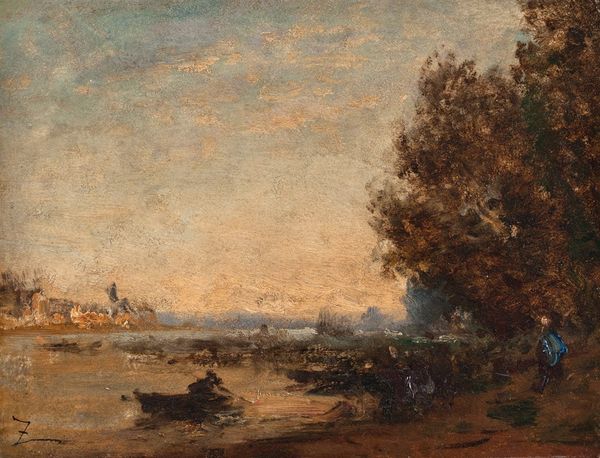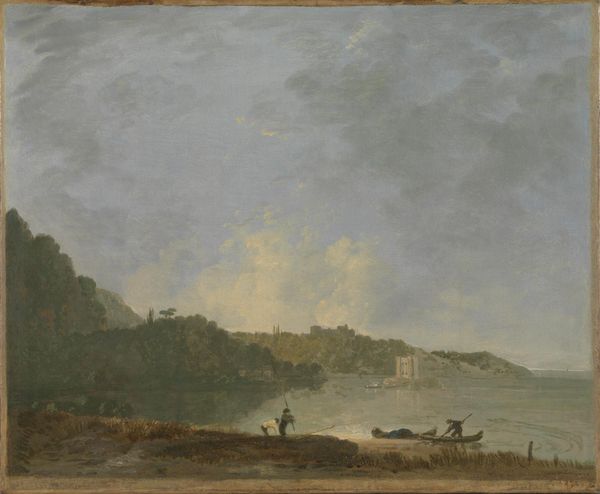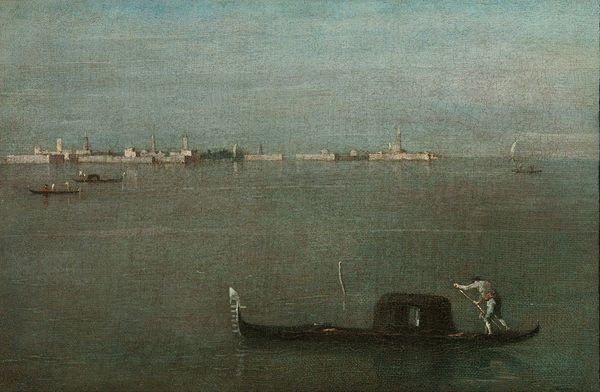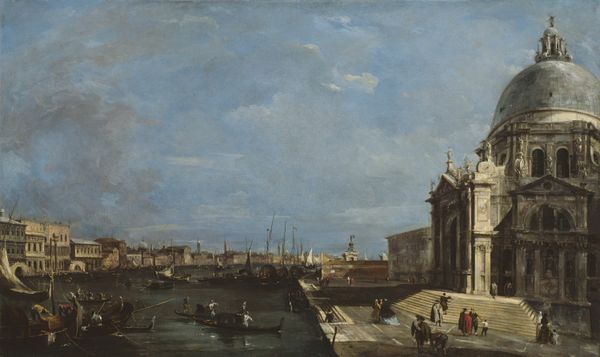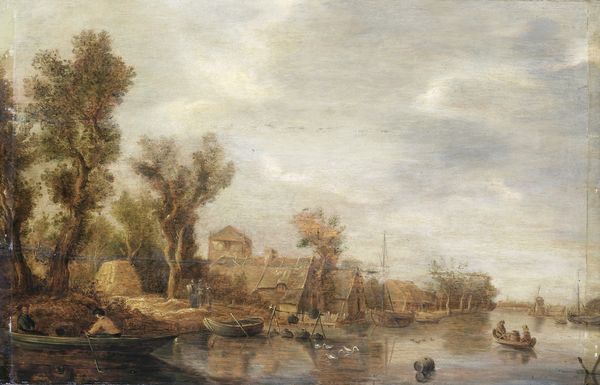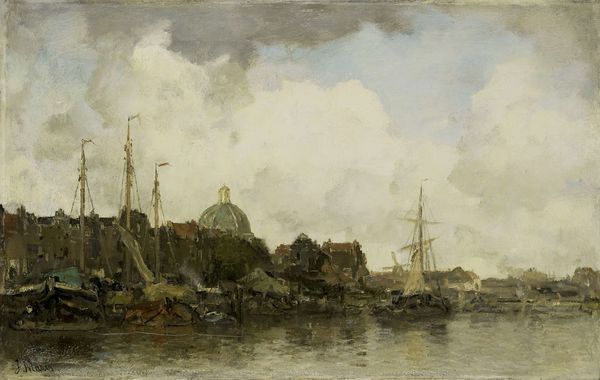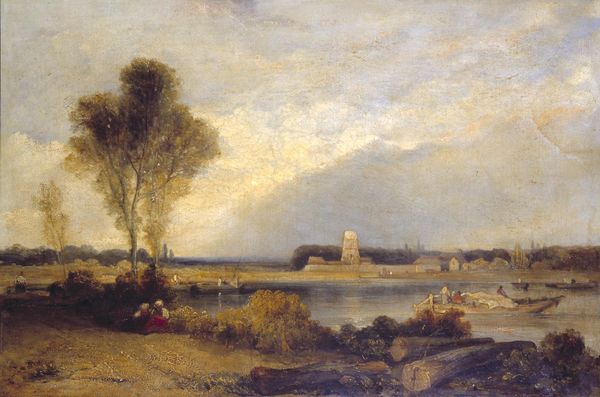
Copyright: Public Domain: Artvee
Curator: What a somber scene. The atmosphere seems so heavy, almost suffocating. A Venetian canal, shrouded in gloom. Editor: That’s certainly a reading, but let’s contextualize. This is "Lagoon near Venice," an oil painting attributed to Francesco Guardi, placing its creation sometime between 1740 and 1800, within the Venetian painting tradition of the Rococo. Considering the era, might there be other nuances at play within this depiction? Curator: Absolutely. Venice was a city of tremendous wealth disparity then. Even in apparent decay, architectural details remind viewers of the power and wealth concentrated in the city. Is Guardi perhaps offering a subtle commentary on the precariousness of such structures? A metaphor for social imbalance? Editor: That's an insightful point. The ruined structures can be interpreted as symbols of societal decay. It certainly feeds into discussions around power, but also points to an emerging public fascination with the sublime. The dramatic sky, the sense of awe tinged with fear – those are elements we see frequently as art grapples with the public sphere in the period. Curator: The use of light interests me. The almost absent sunlight throws into high contrast architectural and environmental landmarks which dominate a space where gondolas ferry, possibly representing not only transport but also social interactions within such systems of disparity and exploitation. Editor: The figures in the gondolas become incredibly relevant when seen from this perspective. Their placement highlights human activity persisting amidst grander narratives, a critical element that demonstrates the continued influence and intersectionality of history within painting tradition and beyond. Curator: So, where I initially saw only gloom, you highlight both the spectacle and societal structures embedded in what may seem like simple art, all from socio-political, intersectional approaches. Very different perspectives, but both helpful in appreciating the artist’s expression. Editor: Exactly. My historical focus helps appreciate the ways Guardi engages with themes of beauty and history to show the public role of art and image making in a pivotal historical moment. Both, I think, allows a much richer perspective for viewers here today.
Comments
No comments
Be the first to comment and join the conversation on the ultimate creative platform.

